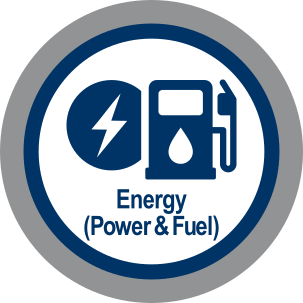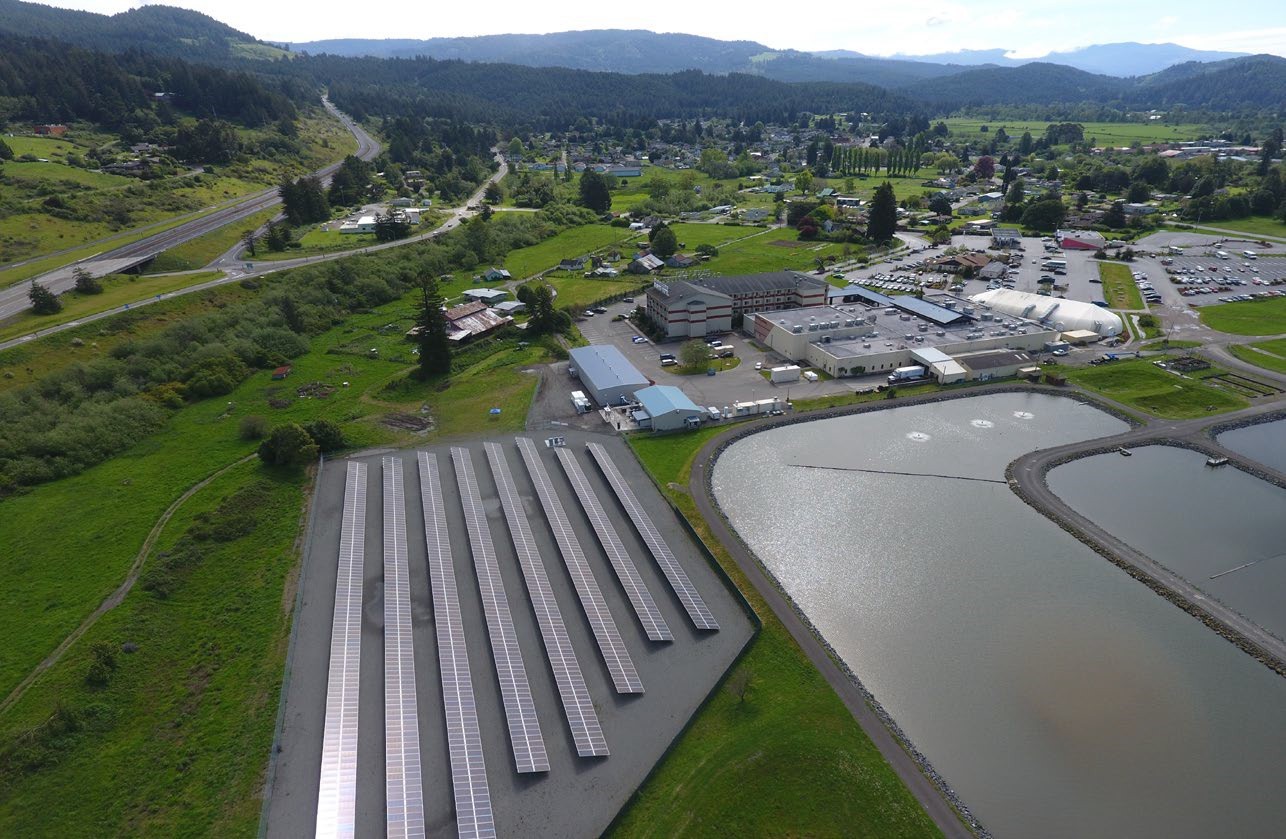Grants for microgrid projects are available through several FEMA Hazard Mitigation Assistance programs.
Definition of a Microgrid
A microgrid is a group of interconnected energy-consuming devices and equipment (e.g., homes, businesses, or industrial facilities) and distributed energy resources within clearly defined electrical boundaries that act as a single controllable entity with respect to the utility grid. These microgrids generally operate while connected to the utility grid but, thanks to control capabilities (smart controls), these microgrid systems can disconnect from the conventional utility grid and operate autonomously to meet anticipated or potential utility outages.
A microgrid typically consists of a smart distribution network limited to a well-defined boundary, a load management system, Distributed Energy Resources (DERs), and storage solutions. Distributed Energy Resources generate power in the form of solar panels, wind turbines, engine generators or other power generation source.
Microgrids Strengthen Community Lifelines and Mitigate Natural Hazard Risk

With the ability to disconnect and operate independently, microgrid systems can provide for grid resilience, mitigate disturbances caused by natural disasters and allow for faster system response and recovery. The presence of a storage system (e.g., battery), sized for the specific application—such as waiting out the transition of power during a utility outage (which could range from a few seconds or minutes to hours or even days)—can also reduce the loss of function of critical infrastructure.
Key Benefits of Microgrids
- Grid Stability – Microgrids can be used to stabilize a certain portion of the grid. If the local utility has a history of voltage and frequency regulation issues, a microgrid can stabilize the grid to a select load or group of loads. Stability can be provided by isolating the problematic loads or energy supplies creating the voltage and frequency instabilities.
- Islanding – Islanding happens when the microgrid isolates itself from the local utility and uses the on-site DERs to provide power to a series of loads. When operating as an island, the microgrid is not affected by outside forces that could affect the quality and availability of utility power.
- Demand Response – Ability to supplement the variability of renewable DERs is beneficial for a microgrid when paired with an energy storage system. For instance, if a cloud obstructs sunlight decreasing or preventing energy collection via solar panels, accompanied batteries can sense the increase of demand on the electrical system and supply supplementary power as needed.

Blue Lake Rancheria Tribe Microgrid Project in Humboldt Bay, CA
Microgrids are Eligible Projects for Mitigation Grants
FEMA has funded microgrids under the Hazard Mitigation Grant Program (HMGP) and is an eligible project for funding in the Building Resilient Infrastructure and Communities (BRIC) program. In order to be eligible, all Hazard Mitigation Assistance program requirements must be met, including Mitigation Planning, Technical Feasibility and Effectiveness, Cost-Effectiveness, and Environmental Planning and Historic Preservation (EHP) considerations. A short description of these program requirements are below:
- Project Scoping – Depending on the program, project scoping funding may be an appropriate first step towards developing a fundable subapplication for the implementation of a microgrid project.
- Mitigation Planning – Subapplicants must have a FEMA-approved Hazard Mitigation Plan that identifies the risks, vulnerabilities, and proposed mitigation strategies that will be fulfilled by the implementation of a microgrid project. Private nonprofit organizations are not subject to the same requirements as subapplicants.
- Technical Feasibility and Effectiveness – A subapplication must demonstrate that the proposed microgrid is designed in accordance with relevant industry standards to accomplish the intended risk reduction. Examples include the Standard for Interconnection and Interoperability of Distributed Energy Resources with Associated Electric Power Systems Interfaces (IEEE 1547) and the Guide for Smart Grid Interoperability of Energy Technology and Information Technology Operation with the Electric Power System (IEEE 2030) , End-Use Applications, and Loads).
- The subapplicant must illustrate that the project is either a stand-alone solution (incorporating new control capability, load management systems, DERs, or storage solutions into an already resilient grid) or a component of an overall solution (new solutions being implemented along with retrofit measures to make the distribution of power more resilient).
- Cost Effectiveness – Using FEMA’s Benefit-Cost Analysis Toolkit, the subapplication must quantify the pre- mitigation loss of function as well as the reduced impact after mitigation. The loss of function could include an avoidance or reduction in downtime for first responders (police or fire departments) or for medical facilities following a disaster that would ordinarily result from a loss of power. The analysis could also consider the risk reduction of loss of electrical utility service for the population served by the microgrid.
- Alternatively, under HMGP, subapplicants may consider the 5-Percent Initiative for microgrid projects (depending upon applicant priorities), which provides a set aside of HMGP funds for projects that are difficult to evaluate using FEMA-approved cost-benefit analysis methodologies.
- Environmental and Historic Preservation Considerations – Prior to awarding any microgrid project, reviews must be completed to ensure the project is compliant with various federal laws and presidential Executive Orders (EOs), such as the Clean Water Act, the Endangered Species Act, the National Historic Preservation Act, EO 11988 – Floodplain Management, and EO 11990 – Protection of Wetlands.
Additional Resources
The U.S. Department of Energy and FEMA maintain many web pages with additional information on microgrids, including:
- The Role of Microgrids in Helping to Advance the Nation’s Energy System – This webpage includes numerous links to additional Department of Energy resources about microgrids.
- Mitigating Natural Hazard Risks in the Energy Sector: Innovative Projects that Help Build Resilient Communities
- The two agencies hosted a webinar on mitigation projects in the summer of 2019.
- FEMA’s Mitigation Action Portfolio – This resource is for potential applicants to learn about eligible project for the Building Resilient Infrastructure and Communities grant program. There are two case studies on microgrid installation in the portfolio.
.


